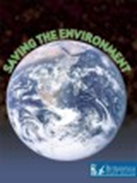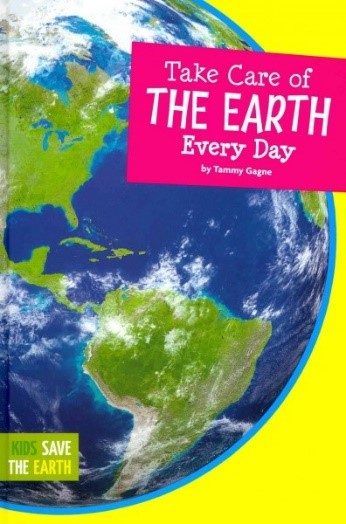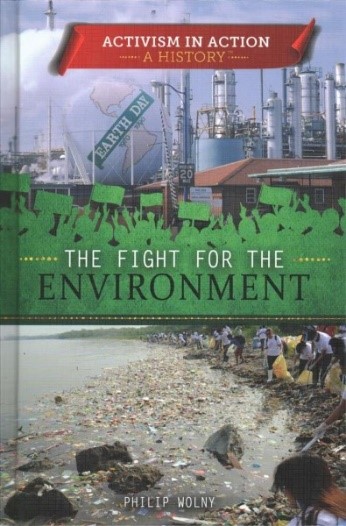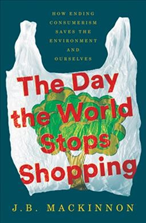Celebrate Earth Day
The environmental movement that inspired the first Earth Day began when I was a very young child. I wasn’t yet three years old when the first Earth Day observances took place in 1970. Though I was too young to remember hearing about the college campus teach-ins that took place across the U.S. that year, I do remember learning about ecology issues like recycling, pollution, and conservation in elementary school in the years that followed.
What prompted the creation of that first Earth Day? Earthday.org indicates that the first Earth Day was established by then Senator Gaylord Nelson, who after witnessing the destruction that was caused by a massive oil spill in Santa Barbara, California in January of 1969, wanted to raise public consciousness about environmental issues. He began by announcing an idea to hold environmental teach-ins on college campuses. He, along with Congressman Pete McCloskey, recruited Denis Hayes to organize and promote these events. April 22 was chosen as the day that the teach-ins would take place. When they began to publicize that date as “Earth Day”, media attention grew.
Approximately 20 million Americans were inspired to participate that first year. According to authors Lewis G. Regenstein and Tish Davidson (The Gale Encyclopedia of Environmental Health), it turned out to be the largest demonstration in history at that time. The teach-ins and rallies were a success. They led to the later creation of several U.S. Environmental polices including the Clean Air Act, the Clean Water Act, and the Endangered Species Act.
Throughout the next twenty years, Americans continued to observe Earth Day each April 22, and its observance continued to serve as a means of raising awareness among children, university students, and the general public. In 1990, when several environmental leaders approached Denis Hayes to organize yet another large Earth Day event, Earth Day went global. That year, over 200 million people from more than 140 countries took part. In celebration, they planted trees, cleaned up roads, presented ecology teach-ins, recycled cans and bottles, protested air pollution, protested the killing of elephants, and demonstrated against the destruction of rain forests.
By 2000, people from 184 countries and 5000 environmental groups were participating in Earth Day celebrations and rallies, and it continues to grow. The overriding theme of the 2000 Earth Day was the development and use of clean energy. It was a theme that came out of a recognition that more needs to be done to combat climate change and global warming.
Twenty-three years later, as we prepare to celebrate yet another Earth Day, climate change continues to be a driving environmental concern. As predicted by scientists, the average daytime temperatures are rising; the number and destructiveness of severe weather events is increasing; and the expanse and duration of severe drought conditions is growing. In turn, greater numbers of species are being threatened with extinction. Humans are experiencing greater economic costs. The time to act is becoming much more urgent.
But what can you, a single person, do to impact climate change and protect the environment? Begin by taking part in this year’s Earth Day events. For a list of some ways that you can participate, visit Earthday.org. Below are some of their suggestions:
- Learn about climate and environmental literacy. Click here for information about Earthday.org’s climate literacy communication toolkits and news coverage.
- End/Reduce plastics pollution. Again, find out more using Earthday.org’s plastic pollution toolkit.
- Plant trees.
- Use your voting power to protect the environment.
- Clean up communities, beaches, rivers, lakes, trails, and parks.
- Adopt sustainable fashion practices. See: https://www.earthday.org/campaign/sustainable-fashion/
Additionally, adopt a greener way to live every day, not just on Earth Day. You can do that by consuming less carbon-based fuels (coal, oil, natural gas), choosing products made with sustainable materials, recycling, and supporting policies that protect the environment.
Would you like to learn more? The Library offers a broad collection of environment-themed books, articles, and databases to help you do so. Here are few that I recommend:
For Kids:
Let’s Celebrate Earth Day / by Barbara deRubertis. (HOL 394.262 DER)
Take Care of the Earth Every Day / by Tammy Gagne. (J 363.7 GAG)
For Teens:
The Fight for the Environment / Philip Wolny (YA 333.72 WOL)
For Adults:

Saving the Environment / David Armentrout. (eBook in OverDrive – requires library card and PIN to access)
The Day the World Stops Shopping: How Ending Consumerism Saves the Environment and Ourselves / J.B. MacKinnon. (339.47 MAC)
These are just a few of the hundreds of books on this topic in our collection. (All told, a recent search of our online catalog for “Earth Day” yielded 770 titles, and a search for “the environment” yielded over 1460 titles.) If you are a Dauphin County Library System member and are looking for even more content, you can explore our databases and digital reference materials (Salem Online, EBSCO eBooks, Gale eBooks) remotely. Just enter your library card number and PIN when prompted. You are sure to find the information, and motivation, you need to do your part in helping to protect the earth’s environment for future generations.
Just by using the services of a library, you are already off to a good start!
Ann Marie
Information Services Assistant
References:
The History of Earth Day. (n.d.). Earthday.org. Retrieved February 22, 2023, from https://www.earthday.org/history/
Regenstein, Lewis G., and Tish Davidson, AM. “Earth Day.” The Gale Encyclopedia of Environmental Health, edited by Jacqueline L. Longe, 2nd ed., vol. 1, Gale, 2019, pp. 269-271. Gale eBooks, link.gale.com/apps/doc/CX2491100092/GVRL?u=dauphin_cls&sid=bookmark-GVRL&xid=8f88cc2e. Accessed 8 Feb. 2023.








